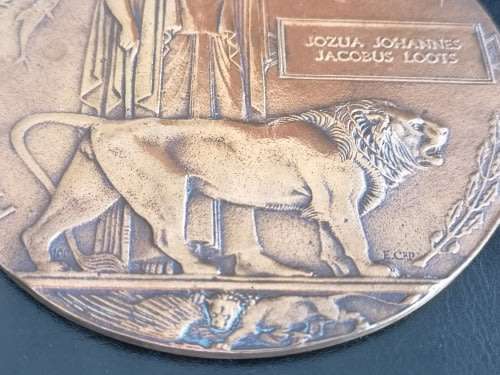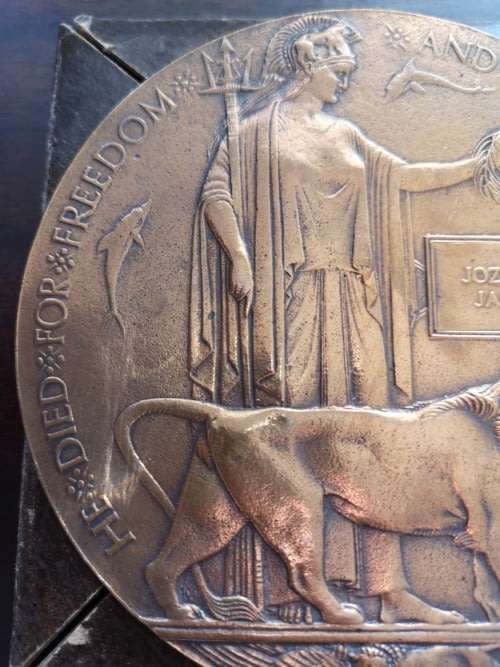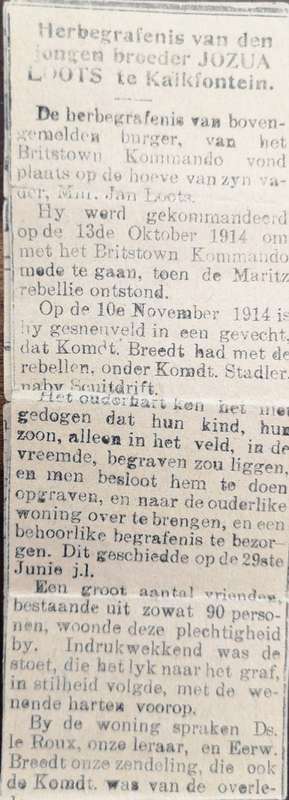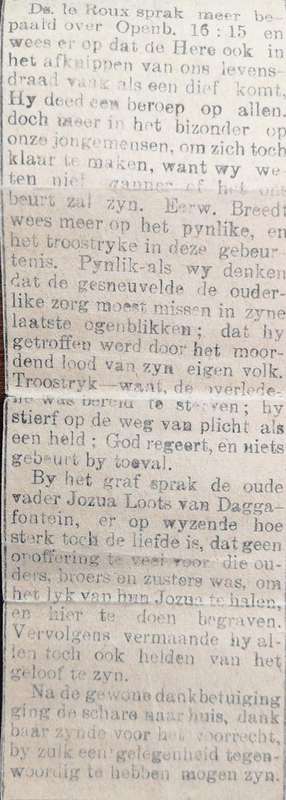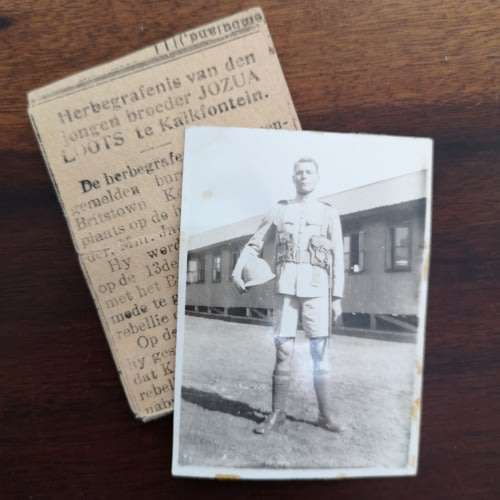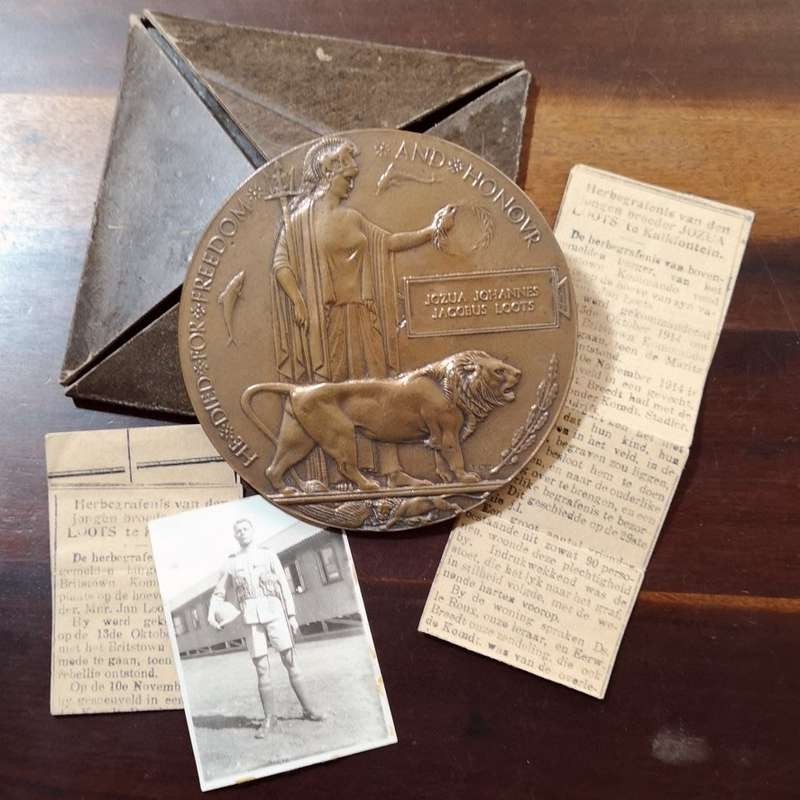
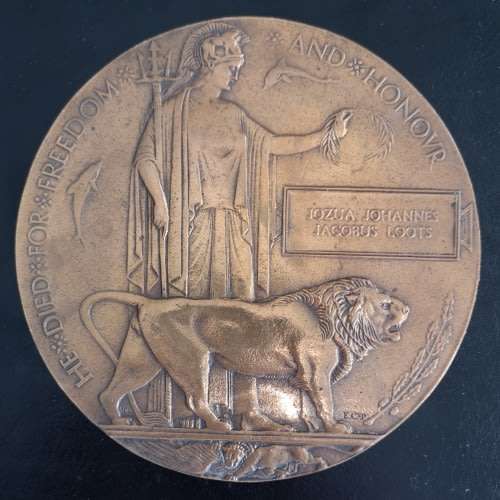


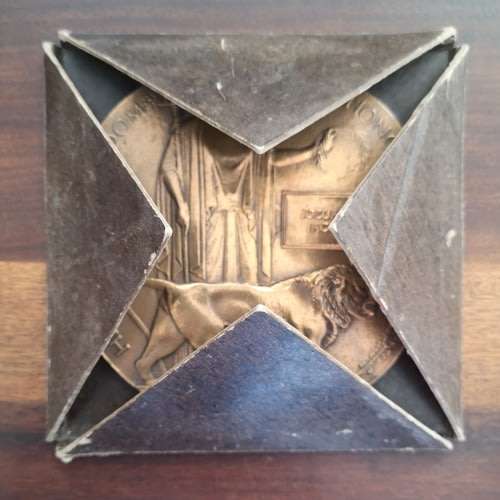
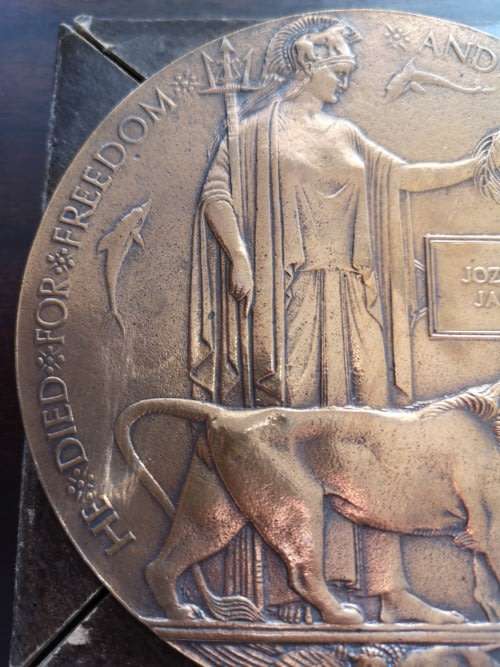

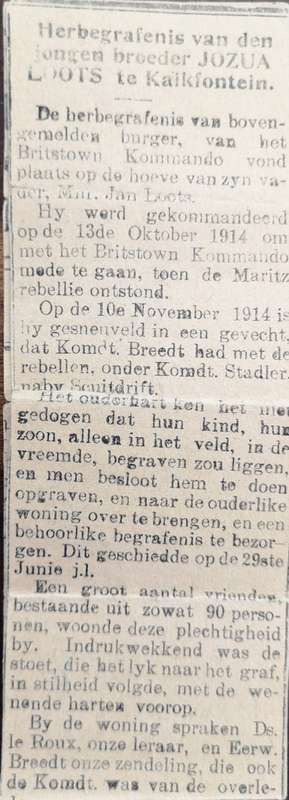
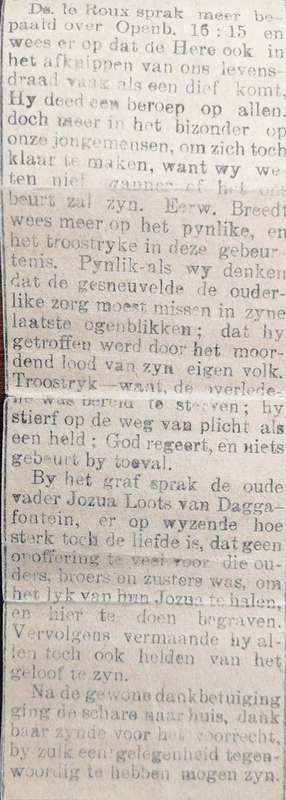
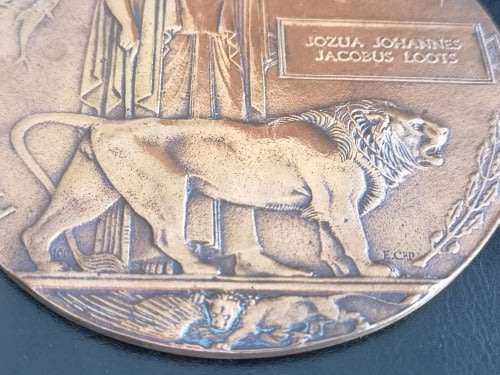
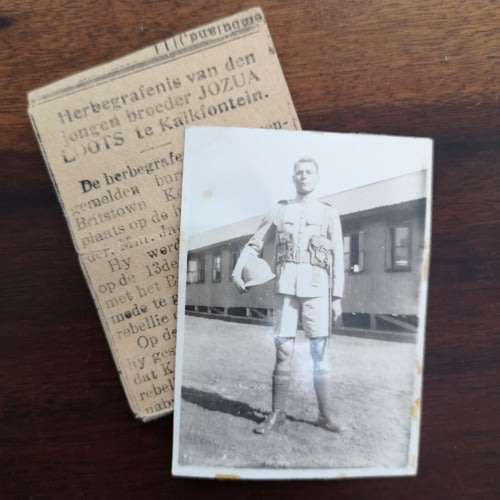





WWI British Death Penny - Maritz Rebellion - Mounted Commandos SA Forces, Britstown Command
Check my rate
| Main centres: | 1-3 business days |
| Regional areas: | 3-4 business days |
| Remote areas: | 3-5 business days |
















| Main centres: | 1-3 business days |
| Regional areas: | 3-4 business days |
| Remote areas: | 3-5 business days |
First World War Death Penny - Memorial Plaque - Mounted Commandos, S.A. Forces, Britstown Command
This Memorial Plaque of Jozua Johannes Jacobus Loots includes a Photo + Newspaper Clipping in Dutch recounting the reburial of Loots in Kalkfontein.
Loots died at the age of 18 years on 1914-11-09 fighting in the Maritz rebellion.
The Maritz rebellion, also known as the Boer revolt or Five Shilling rebellion was an armed insurrection which occurred in South Africa in 1914 at the start of World War I, led by Boers who supported the reestablishment of the South African Republic in the Transvaal. https://www.sahistory.org.za/article/responses-south-africa-outbreak-wwi-afrikaner-response-and-1914-rebellion
Jozua Johannes Jacobus Loots served as a Private in the Mounted Commandos, S.A. Forces, the Britstown Commando unit. He was killed in action at Scuits Drift'.
The Memorial Plaque was issued after the First World War to the next-of-kin of all British and Empire service personnel who were killed as a result of the war. The plaques (which could be described as large plaquettes) about 4.75 inches (120 mm) in diameter, were cast in bronze, and came to be known as the "Dead Man’s Penny", because of the similarity in appearance to the much smaller penny coin.
Overall very fine, wear to original carded folder. This plaque is numbered 100 (in front of the left back leg of the lion). On the British side 101 were killed and wounded, with 124 rebels killed.
Designed by by the sculptor and medallist Edward Carter Preston. The design includes an image of Britannia holding a trident and standing with a lion. The designer's initials, E.CR.P., appear above the front paw. In her outstretched left hand Britannia holds an olive wreath above the rectangular tablet bearing the deceased's name cast in raised letters. Below the name tablet, to the right of the lion, is an oak spray with acorns.
The name does not include the rank since there was to be no distinction between sacrifices made by different individuals.Two dolphins swim around Britannia, symbolizing Britain's sea power, and at the bottom a second lion is tearing apart the German eagle. The reverse is blank, making it a plaquette rather than a table medal. Around the picture the legend reads (in capitals) "He died for freedom and honour", or for the six hundred plaques issued to commemorate women, "She died for freedom and honour".


